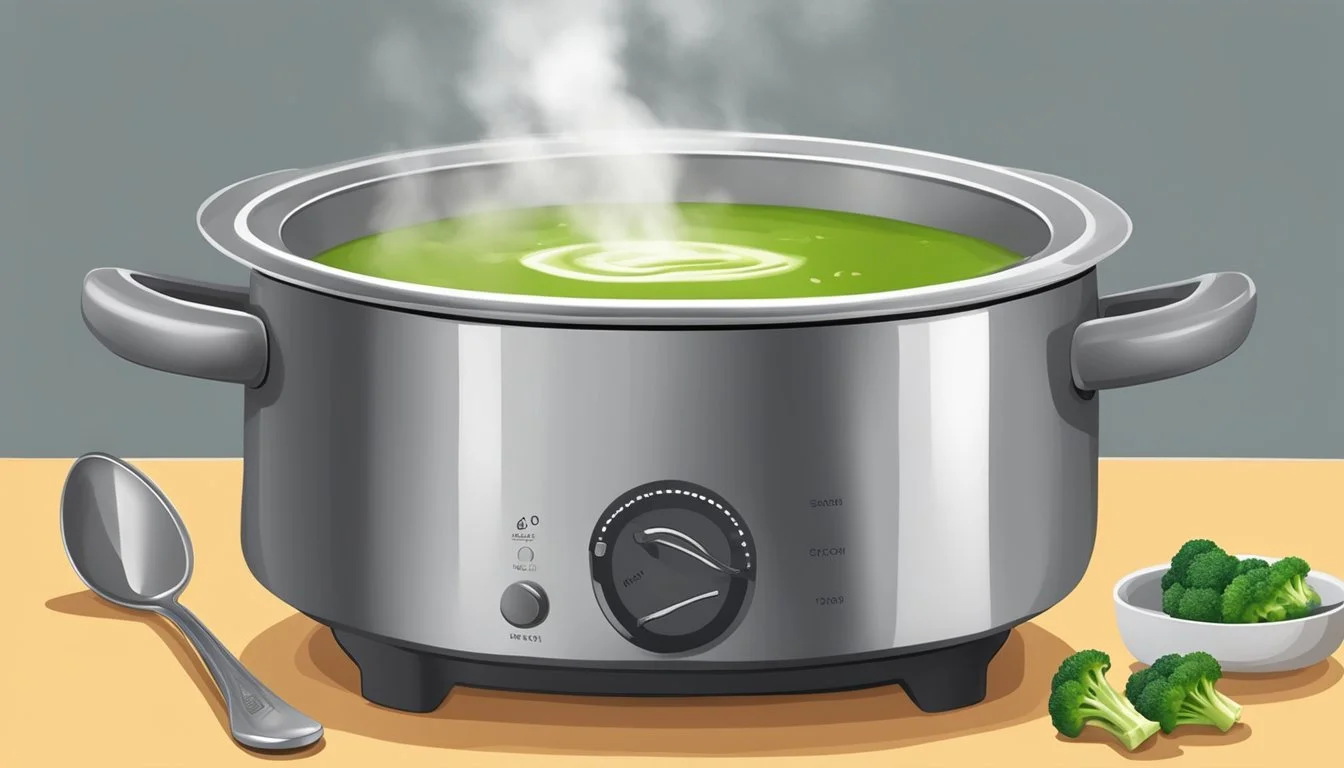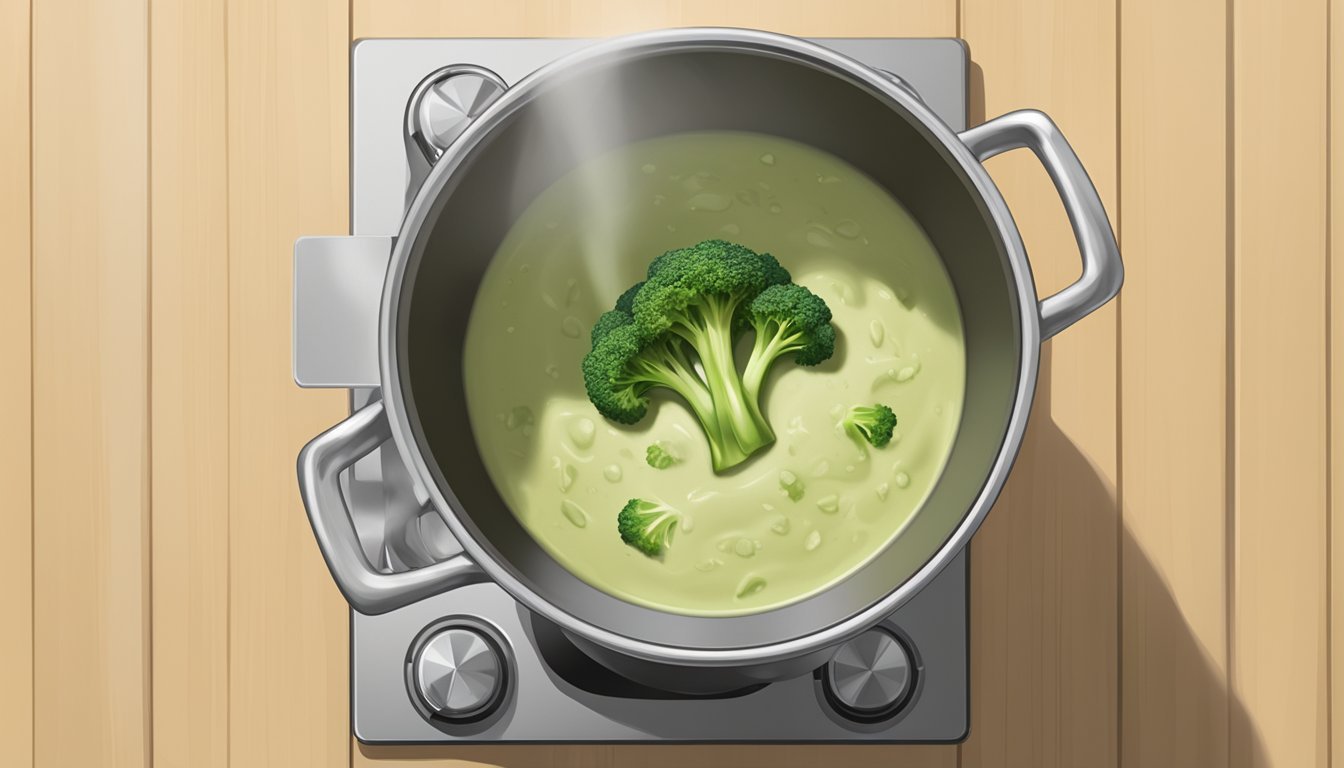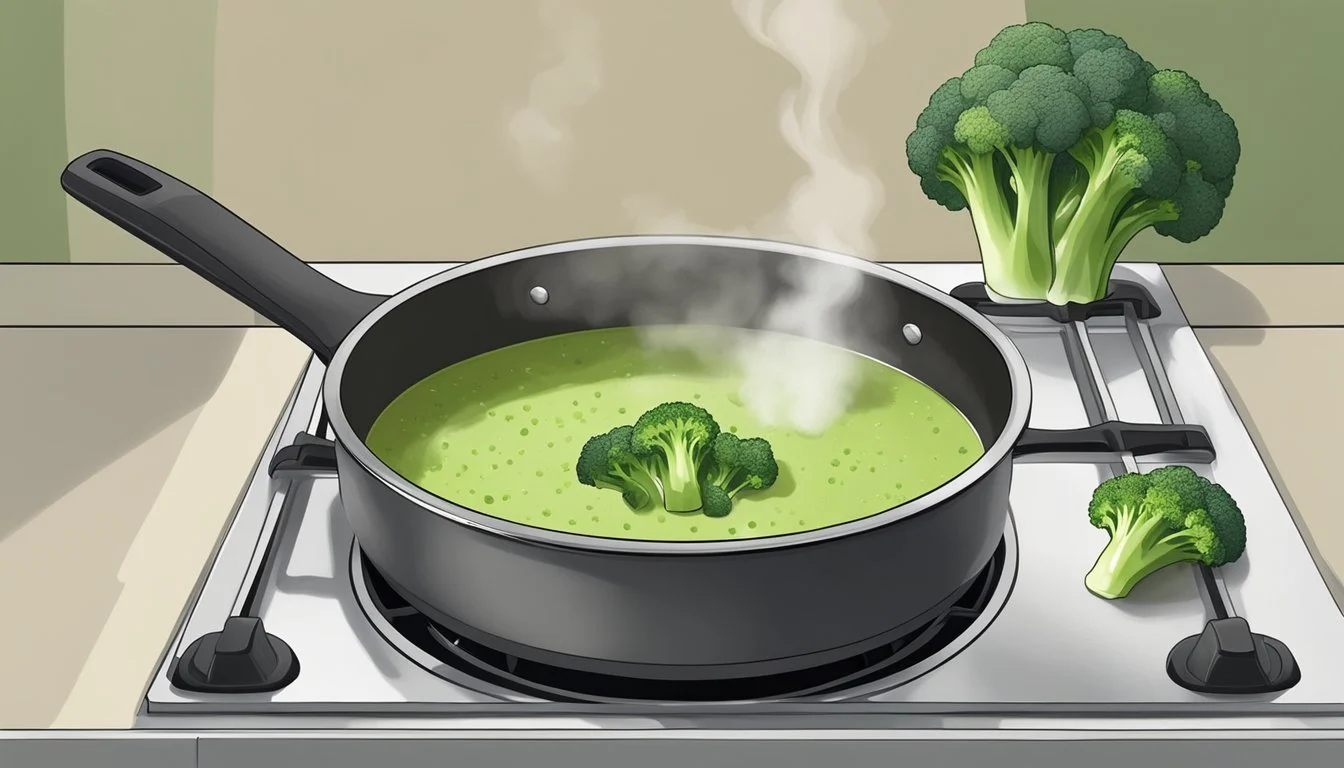Best Way to Reheat Cream of Broccoli Soup
Ensuring Peak Creaminess and Flavor Preservation
Cream of broccoli soup is a comfort dish many enjoy for its creamy texture and rich flavor. Preserving these qualities when reheating leftovers is crucial to recreating the experience of the initial serving. Understanding the properties of cream-based soups (What wine goes well with soups?) is essential, as they are prone to separation and texture changes when exposed to direct, high heat.
To maintain the integrity of the soup’s creaminess and flavor, gentle reheating is imperative. A stovetop reheating method, employing low to medium-low heat, allows for even warming while minimizing the risk of scorching. Regular stirring is also key in preventing the soup ingredients from clumping or sticking to the pot. In situations where the soup's consistency has thickened in the refrigerator, adding a splash of milk or broth can aid in restoring its smooth texture.
Those looking for convenience might opt for a microwave, which can work effectively with proper technique. Reheating in a microwave-safe bowl at medium power in intervals, while stirring between each, ensures that the heat is distributed gently throughout the soup. This method helps in avoiding the overheating of any one portion of the creamy broth, thus keeping the flavors intact and preventing undesirable changes in texture.
Understanding Cream of Broccoli Soup
Cream of Broccoli Soup combines the comforting flavors and creamy texture that many people seek in a nutritious soup. It's important to recognize the soup's characteristics and how they affect storage techniques to maintain its flavor and creamy consistency.
Characteristics of Cream of Broccoli Soup
Cream of Broccoli Soup is known for its rich and creamy consistency. It typically contains ingredients like milk or cream, broccoli, and often has added flavors from ingredients such as onions, garlic, and chicken stock. The smooth texture and the balance between the freshness of the broccoli and the richness of the dairy components define its comforting flavors. One variant, broccoli cheddar soup, includes cheese, which contributes a sharp and savory dimension to the dish.
Common Storage Methods
When dealing with leftovers or homemade soup, proper storage is essential to preserve Cream of Broccoli Soup's quality. The soup can be kept in the refrigerator for several days when stored in airtight containers to maintain freshness and prevent the absorption of other flavors.
For longer-term storage, portioning the soup into freezer-safe containers before freezing is a practical approach. This not only preserves the soup but also makes it simple to thaw only the necessary amount. It's crucial to note that the creamy elements might separate after freezing and thawing, but the soup can usually be re-emulsified through proper reheating.
Preparing Soup for Reheating
When reheating cream of broccoli soup, the goal is to maintain its creamy consistency and rich flavor, taking care to preserve the soup's delicate ingredients. The preparation phase sets the stage for a successful reheating process that honors both food safety and taste.
Safely Thawing Frozen Soup
To begin, one should safely thaw frozen cream of broccoli soup to prevent any compromise of texture and flavor. Thawing should occur in the refrigerator, allowing the soup to defrost slowly and reduce the risk of bacteria growth. This process can take several hours, so planning ahead is essential. A safe thaw ensures that the frozen soup does not exhibit freezer burn, which can affect both the quality and taste of the soup.
Organizing Ingredients for Reheating
Before reheating, one must assemble the additional ingredients needed to restore the soup to its creamy glory. Since freezing can dilute flavors, adding a splash of milk or broth can compensate for any loss of creaminess. Cold dairy products such as heavy cream should be at hand, alongside any spices that might be used to enhance the flavor.
Other supplementary ingredients include:
Cheddar cheese: Essential for the soup's signature taste, it should be added while reheating to ensure even melting.
Garnishes: Crispy croutons, cooked bacon, freshly-chopped herbs, or shredded cheese ready for topping just before serving.
For the best results, chefs recommend prepping a pot with ample space to stir and combining liquid ingredients in measured amounts before reheating. They may opt to have potatoes on hand, as they can serve to thicken the soup if needed. Keeping ingredients organized contributes to a seamless reheating process, leaving one with a soup that's as close to the original batch as possible.
Reheating Cream of Broccoli Soup
When reheating cream of broccoli soup, one must prioritize maintaining its creaminess and flavor. Two effective methods are on the stovetop and in the microwave, each requiring specific steps to ensure even heating to the ideal internal temperature.
Stovetop Reheating Method
To reheat cream of broccoli soup on the stovetop, one should:
Pour the soup into a saucepan.
Heat the saucepan over low to medium-low heat.
Stir the soup frequently to ensure even heating and prevent sticking or burning.
Monitor the soup's temperature with a food thermometer, ensuring it reaches 165°F for safe consumption.
Once heated, transfer the soup to a serving bowl and enjoy.
This method allows for a gentle simmer, which can help preserve the soup's texture and flavor.
Microwave Reheating Method
Reheating in the microwave involves:
Placing the soup into a microwave-safe bowl.
Covering the bowl with a microwave-safe lid to retain moisture.
Heating the soup on medium power in short bursts, stirring between each burst to promote even heating.
Checking the temperature with a food thermometer, reaching 165°F before consumption.
Serving the soup immediately after reheating for the best experience.
This method is quicker but requires careful attention to prevent overheating and spoiling the creaminess of the soup.
Ensuring Quality and Safety
When reheating cream of broccoli soup, maintaining the original taste and quality, while ensuring it is safe to consume, requires careful attention to temperature and storage practices.
Checking Soup Temperature
It is crucial to reach and verify the internal temperature of the soup to ensure safety and quality preservation. The goal is to heat the soup to at least 165°F, which is considered safe for consumption by food safety guidelines. A food thermometer should be used to measure the internal temperature accurately. Keeping the heat distribution even and consistent will preserve the soup's smooth texture, preventing overheating, which can affect taste.
Heat Gradually: Warm the soup gently over low to medium-low heat.
Stir Regularly: Stir the soup to avoid hot spots and promote even warming.
Check Temperature: Use a food thermometer to confirm soup has reached 165°F.
Preventing Bacterial Growth
Stored and chilled soup must be handled properly to prevent bacterial growth. Soup should be cooled down promptly and stored in airtight containers within two hours of preparation to maintain food safety. When reheating, make sure to bring the soup up to temperature quickly to inhibit bacterial proliferation.
Prompt Storage: Cool soup and store in airtight containers within two hours of cooking.
Maximum Storage Duration: Keep the stored soup in the refrigerator for no more than 3-4 days to maintain quality and safety.
Reheat Thoroughly: Ensure that every part of the soup reaches 165°F to kill any potential bacteria.
Seasonings like salt and pepper can be added after reheating, if necessary, to enhance the taste. However, it is important to taste the soup first, as the flavors can concentrate upon refrigeration, which might impact the need for additional seasoning.
Final Touches
Once the cream of broccoli soup is reheated to creamy perfection, the final touches enhance its flavor and presentation right before serving.
Adding Garnishes and Accompaniments
Garnishes:
A sprinkle of fresh herbs, such as parsley or chives, adds a pop of color and a herby fragrance.
For added texture, a handful of homemade croutons can be scattered on top.
Accompaniments:
Crusty bread on the side is ideal for dipping and scooping, turning the soup into a more substantial meal.
A spoon specifically designed for soup ensures comfortable and effortless enjoyment of every bite.
Serving and Presentation
Bowls:
Serve the soup in pre-warmed bowls to maintain its temperature and flavor.
Choosing a bowl with a wide brim allows space for garnish without overcrowding.
Final Check:
Just before presentation, a chef should taste the soup to ensure that the reheating process has preserved the comfort food essence.
A light drizzle of quality olive oil can add a final note of richness and complement the creamy texture.
Alternative Soup Variations
When reheating cream of broccoli soup or adapting it into different variations, one should consider the type of soup and which additional ingredients can enhance flavor without compromising texture.
Making Adjustments for Different Soup Types
For thickened soups like a classic cream of broccoli, gentle heating is crucial to maintain the emulsion of cream and broth. If the base includes starch, such as flour or cornstarch, these soups are more prone to separation under high heat.
Seafood soups require special attention during reheating to preserve the integrity of the delicate proteins found in fish and shellfish. (What wine goes well with shellfish?) A lower temperature is recommended, ensuring seafood additions do not become overcooked and rubbery.
Incorporating Additional Ingredients
When enhancing cream of broccoli soup, one may consider adding:
Broccoli: Fresh or frozen broccoli can be blended in after the soup is reheated to add freshness and an extra serving of vegetables.
Aromatics: Sautéed garlic and onion can significantly enhance the flavor profile and should be gently cooked before incorporating into the soup.
Ingredients for Texture: Cheeses, crumbled bacon, or croutons can add a satisfying crunch or richness and are best added after reheating to retain their texture.
Introducing additional ingredients should be done with care to maintain the balance of flavors and the creamy consistency that makes cream of broccoli soup so delightful.








